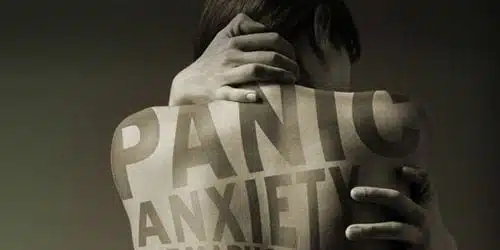
Scott is a germaphobe. He keeps his home spic-and-span and can’t allow a piece of trash to stay inside for more than a few seconds. During his self-introduction on Obsessed, he demonstrates what this is like, carrying a teeny bit of excess outside to the garbage can, then washing his hands promptly when he reenters the house. The camera offers a wide-angle view of his shiny floors and spotless walls, a shot less documentary than ooky, intimating his own anxious feelings as he gazes on his disinfected domain.
Thus begins the new series from A&E, home of Intervention. The series share a keen interest in what goes wrong with people, specifically, disorders that overtake their lives. Here the focus is OCD (obsessive compulsive disorder), of which there are numerous varieties. But where Intervention tends to view and represent addiction as a family concern — featuring lengthy interviews with relatives and friends who hope to help their loved ones through “hitting rock bottom” and coming out in a rehab center — the new show is more intently concentrated on individuals. This is not to say that family dynamics and social situations do not affect OCD. It is to say that both narrative and treatments in Obsessed are different from those in the first show.
For one thing, it invites subjects to participate in their treatments from jump. The show features no surprise “intervention” sessions, and thus no built-in drama over whether or not the patient will say yes or no to rehab. Scott and the second interviewee in the first episode, Helen both take up video cameras given to them by the show in order to tape themselves in the throes of panics. Scott scours his bathroom. Helen, a single mother of three small children who suffers panic attacks when driving (her father was killed in a freeway accident that she first saw on TV, just here years ago), looks into the lens late at night and frets that she cannot sleep because she needs to check the clock and the door locks again and again. Each participant describes symptoms and desires to be healthy. And each sees a behavioral therapist provided by the show.
The bulk of the storylines has to do the subjects’ work, much as the show’s title suggests — more about the feeling of the subject, less about the therapeutic act. The episode sets up the two separate trajectories in parallel fashion (broken down into five “acts,” including steps in the behavior therapy, like “Exposures” and “Desensitization”). Scott and Helen both want to make sure viewers know their problems are not trivial. “People want to make fun of OCD,” says Scott, tearfully, “But if you knew how lonely it makes us feel… It’s really not that funny.” They also have immediate goals for regaining a sense of control over their behaviors: Scott has a new boyfriend, Jason, who appears briefly in the show, plainly uncomfortable in front of the camera but apparently a good sport, too.
Helen’s motive is her children. She worries that she might influence them with her repetitive behaviors and especially her troubling compulsion to wear her father’s clothes (the shirt he was wearing when he died, still blood-flecked). She keeps his belongings in a box in her bedroom and when her little boy spots her, the camera takes his view, peeping through the barely open door, as her face falls, stricken to be found out, then inviting him inside so she can try to explain that really, she’s okay.
Obsessed‘s most disturbing moments are like this, approximating a point of view or state of mind. Also distinctly odd is the decision by Scott’s OCD therapist, Shana Doronn, to “expose” him to dirt (or contamination) in his house in the form of her menstrual blood — at least in completely unnerving theory. As Jason watches, seated next to Scott on the ultra-clean sofa, she announces that she has her period and has to use the bathroom. “You want to throw a bloody tampon in the trash in my bathroom?” he asks, his face sweaty. He worries, accedes, and even puts the towel she says she’s touched onto his face, as she repeats a few key ideas: “There are germs on your hand,” she says “And they’re already absorbed in your skin. How are you feeling, 0 to 10?” “Eight!” he says grimly, determined to get through the ordeal.
While neither Doronn nor the show gets into the sex and gender peculiarities of this exposure, Scott is grateful for learning he can survive the panic, that he can, in his doctor’s words, “Feel it really shoot up and come down” and then “learn that his anxiety will come down on its own,” so that he “won’t need to do the behavior,” the washing and the scrubbing and the sanitizing.
This plot is rather neatly contained within the show’s formal rubric, which follows on Intervention‘s, with text inserts and codas. While the absence of the gotcha scene limits the histrionics, it also allows the appearance of greater subject participation, less adversarial and less lurid, though the show apparently does its best to sensationalize Helen’s driving with her therapist, as she worries repeatedly, out loud, about dying in shots that are close and tense. Obsessed does its own kind of work, trying to represent what it “feels like” to be obsessed. That it falls short has to do both with the complexity of these conditions and its own limited, conventional means of conveying subjective states.

